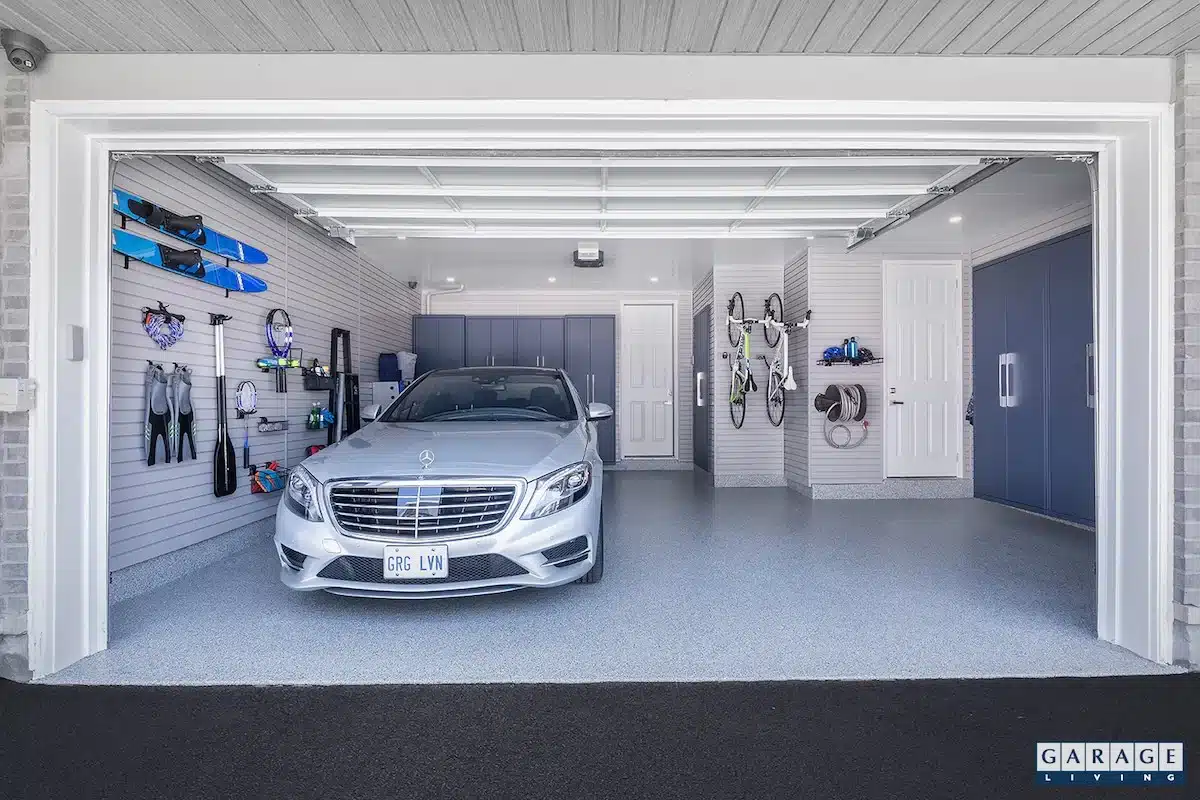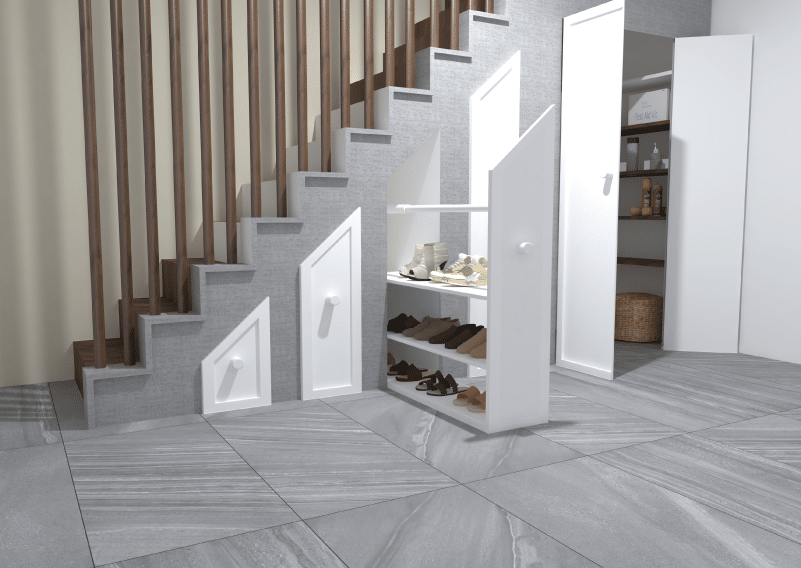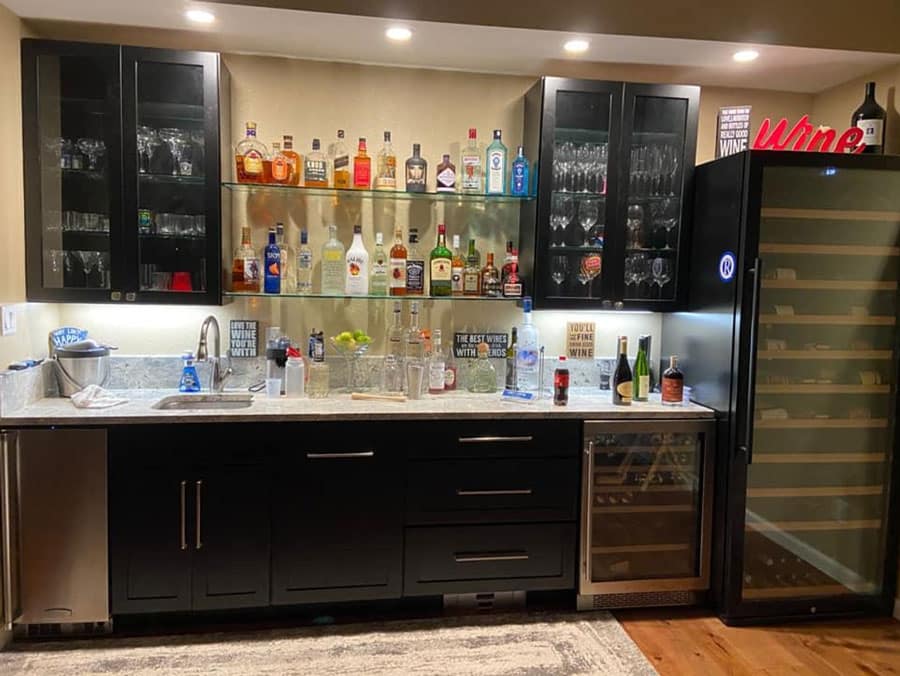Beat the Heat: Effective Garage Cooling Ideas to Stay Chill
Are you searching for garage cooling ideas that effectively beat the heat? A hot garage can be more than an inconvenience—it affects your comfort, projects, and storage. This article cuts straight to the chase, offering a variety of cooling techniques to keep your garage at a pleasant temperature. From natural ventilation tricks to sophisticated cooling systems, we’ve got you covered without any excess heat or hype.
Key Takeaways
- Maximize air circulation in your garage with optimal fan placement, enhanced natural ventilation, and active ventilation systems to keep things cool.
- Insulate your garage properly using the right materials for the roof, walls, and doors, and weather-stripping to fend off heat transfer for better temperature control.
- Implement smart shading strategies like awnings, landscaping with shade trees, or reflective paints to prevent heat buildup from the sun.
Maximizing Air Circulation in Your Garage
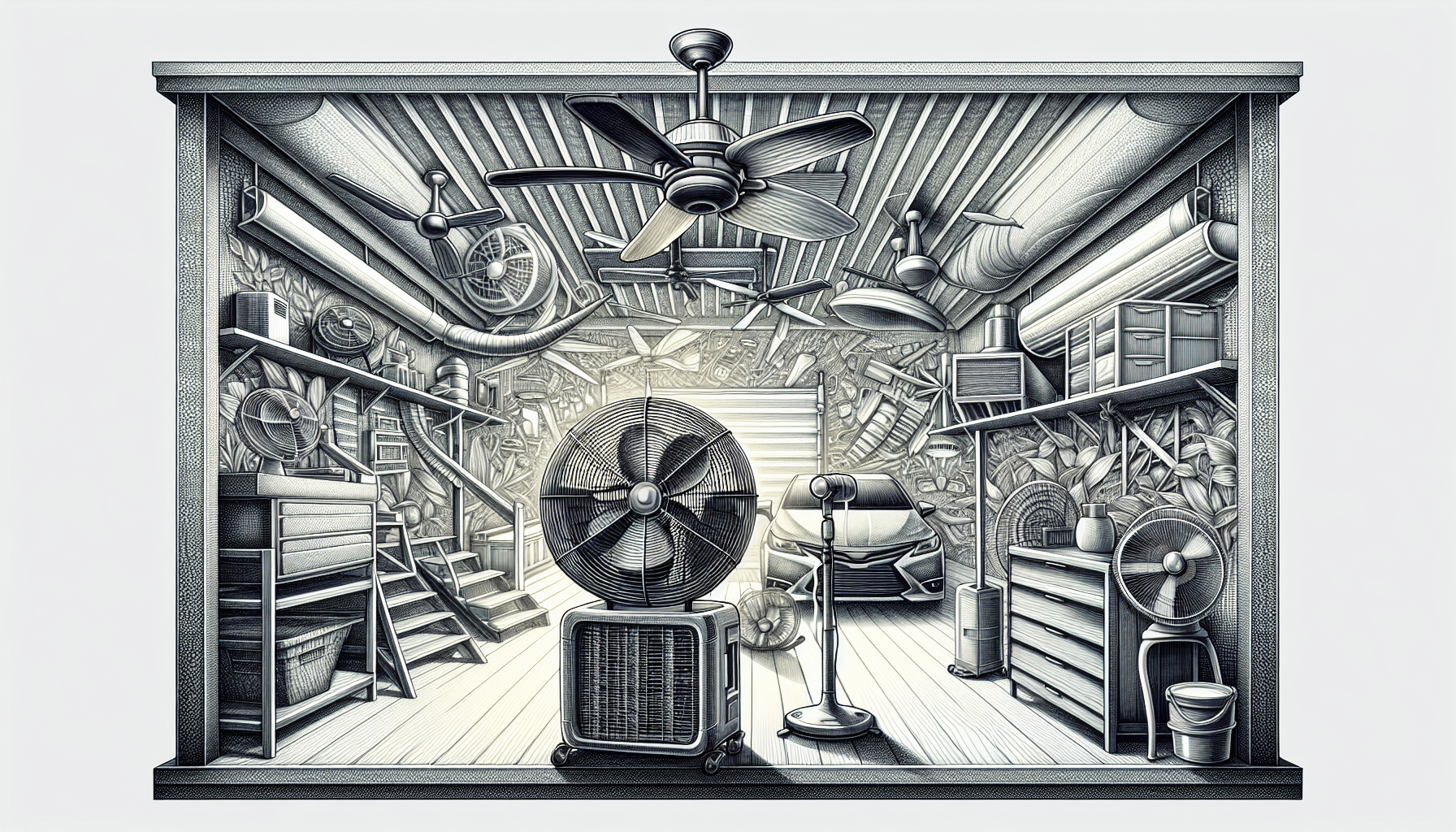
The secret to a cool garage lies in maximizing air circulation and maintaining an air temperature cool enough for comfort. Picture this: you open your garage door after a long day, and instead of being hit by a wave of heat, you feel a cool breeze. Sounds heavenly, doesn’t it? To achieve this, you’ll need to optimize the placement of fans, enhance natural ventilation, and consider installing active ventilation systems.
Ready to learn more? Let’s proceed.
Optimal Placement of Fans
First things first, fans are a garage’s best friend. Imagine them as your personal garage maestros, conducting a symphony of cool air. Box fans, pedestal fans, and ceiling fans are all great options for circulating air and pushing hot air out of your garage. But remember, it’s all about positioning. Your ceiling fans should be positioned so that their blades are 7 to 9 feet above the floor and 10 to 12 inches below the ceiling for optimal air movement.
And don’t forget your windows or open garage door – placing a fan here can create a comforting breeze within the garage.
Enhancing Natural Ventilation
Mother Nature can also lend a hand in your quest for a cool garage. By enhancing natural ventilation, you can improve airflow and create a more comfortable garage environment. Installing roof vents is a great place to start. These create an escape route to expel hot air, allowing cooler air to be drawn in from lower parts of the garage.
You can also leave a gap at the bottom of the garage door to draw in cooler air. And strategically opening garage doors during cooler temperatures can give your garage a refreshing flush of fresh air. Don’t underestimate the power of a good breeze!
Active Ventilation Systems
To truly master the art of garage cooling, consider installing an active ventilation system. These systems increase air circulation and remove trapped hot air, keeping your garage cool and comfortable more effectively than passive systems.
One option is an attic fan with a built-in thermostat. This handy gadget activates when the temperature reaches a pre-set level, expelling hot air and reducing garage heat. By doing so, it effectively helps to push hot air out, making your space cooler. Now that’s what we call working smarter, not harder!
Insulating Your Garage for Better Temperature Control
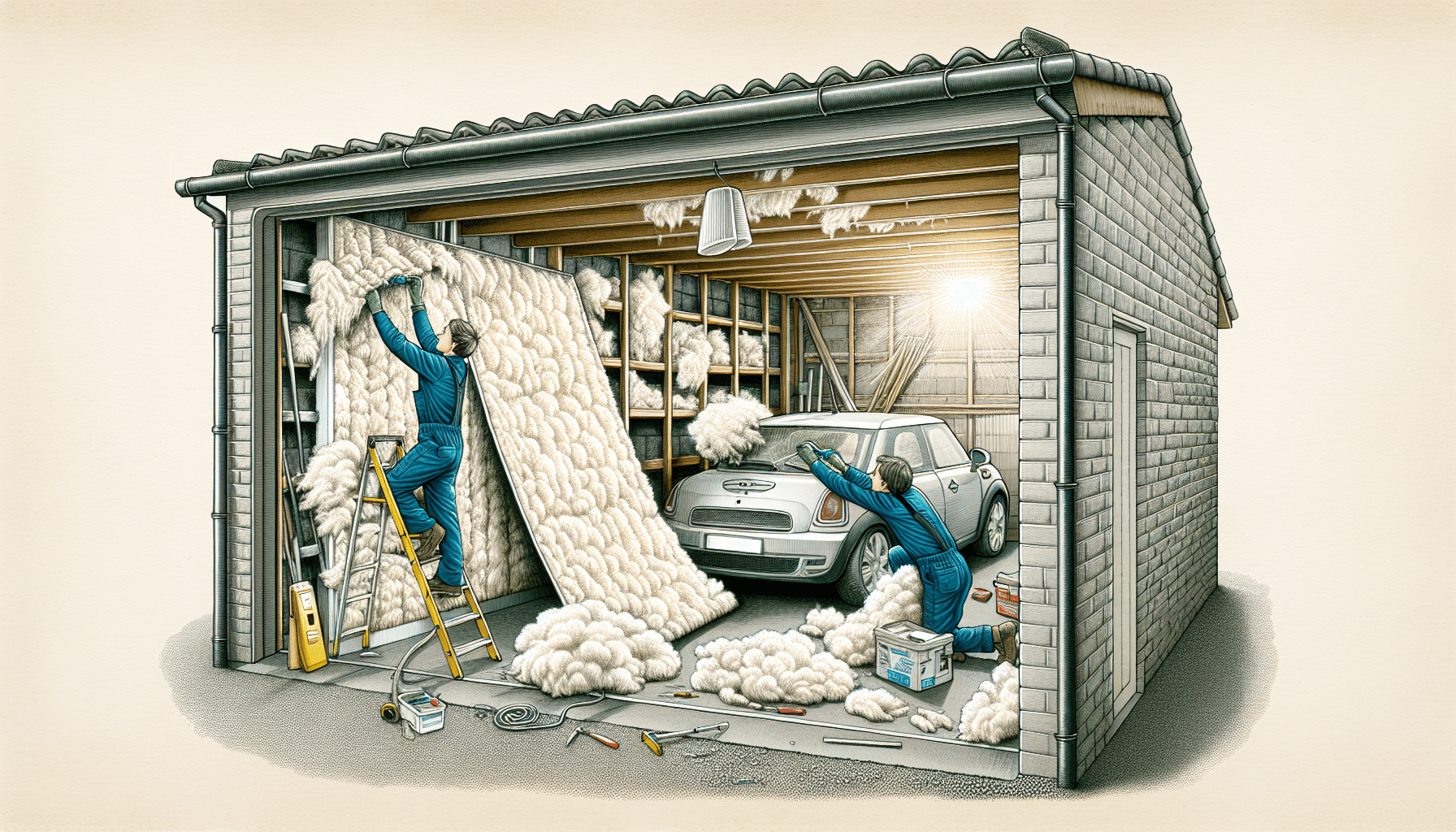
Now that we’ve got air circulation sorted, it’s time to talk insulation. Think of insulation as your garage’s secret superhero, fighting off heat transfer and keeping your garage cool. The key areas to focus on are the roof, walls, and doors of your garage.
But how do you choose the right insulation material? And what about weatherproofing doors and windows? Or upgrading to insulated doors? Let’s examine this in more detail.
Choosing the Right Insulation Material
When it comes to insulation, you have options. Some popular choices for insulating your garage include:
- Fiberglass insulation, which is available in batts and long blankets
- Foam boards, such as polystyrene, extruded polystyrene, and polyisocyanurate
- Reflective barriers
The key is to consider the pros and cons of each option and choose the one that suits your garage best.
Weatherproofing Garage Doors and Windows
Let’s not forget about the doors and windows. Air leaks around garage doors and windows can let in hot air and make your garage feel like a sauna. Caulking can fill in air gaps around window frames, and vinyl or rubber weatherstripping can seal both windows and garage doors.
By weatherproofing your hot garage, you’re essentially giving heat the cold shoulder – and trust us, your garage will thank you garage immediately!
Insulated Door Upgrades
If you’re ready to take your garage cooling to the next level, consider upgrading to insulated garage doors. Not only do they offer exceptional insulation, but they also shield your garage from external temperatures and lead to a more moderate interior climate.
It’s like giving your garage its very own air temperature-controlled bubble!
Smart Shading Strategies to Keep the Sun at Bay
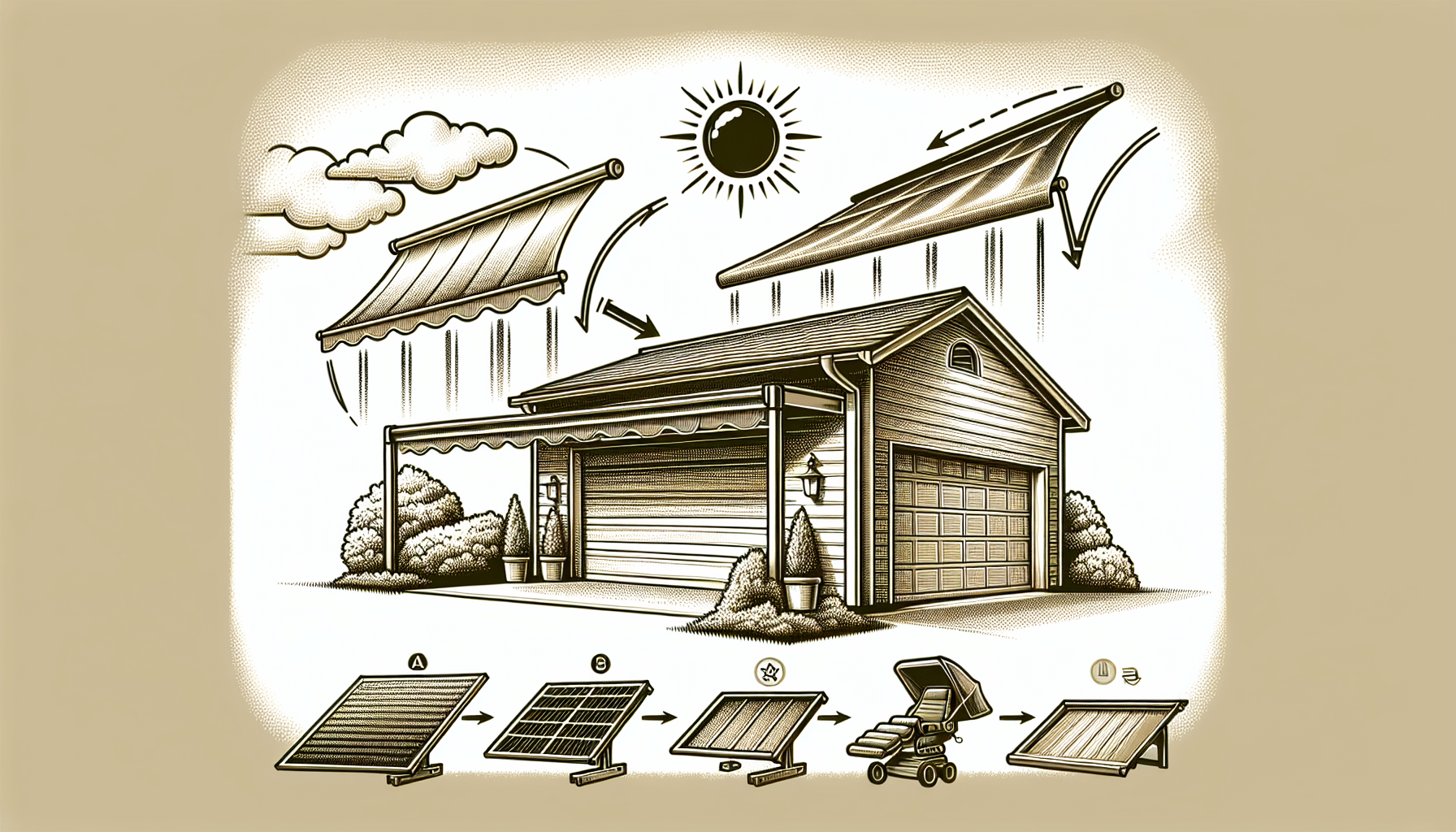
As they say, prevention is better than cure, and that holds true for keeping your garage cool. One way to prevent heat buildup is by implementing smart shading strategies. This could mean installing awnings or canopies, using landscaping to your advantage, or even applying reflective paints and coatings.
Let’s explore these tactics.
Installing Awnings or Canopies
Awnings and canopies are like sunglasses for your garage, shielding it from the harsh glare of the sun. There are various types to choose from, including:
- Retractable awnings
- Stationary awnings
- Motorized awnings
- Freestanding canopies
Retractable and motorized awnings offer the convenience of adjusting the shade based on the sun’s position. Stationary awnings and freestanding canopies, on the other hand, offer a reliable and consistent shade solution. Choose what suits your garage and your lifestyle best.
Landscaping for Cooler Air
Landscaping can be both aesthetically pleasing and functional. Strategically planting trees, like the paper birch, tulip poplar, or dawn redwood, can provide a natural barrier against the intense heat of the sun. Not only do these trees offer cooling shade, but their changing foliage also provides seasonal sun control.
So, if you have a green thumb, this is a win-win situation!
Reflective Paints and Coatings
Reflective paints and coatings are like a magic mirror, deflecting sunlight away from your garage and reducing heat absorption. They come in different types, such as elastomeric and ceramic coatings, and can be applied to garage walls and roofs.
This is a simple yet effective way to cool a garage and keep your garage cool without compromising on style.
The Role of Dehumidifiers in Garage Cooling
In the fight against garage heat, dehumidifiers are an underrated ally. They work by extracting water vapor from the air, reducing the ‘sticky’ feel of high humidity and making the air feel inherently less hot. Plus, with smart devices like the Cielo Breez, you can control the dehumidifier to maintain desired humidity levels efficiently. It’s like having your personal weather station!
Utilizing Color and Clutter Management
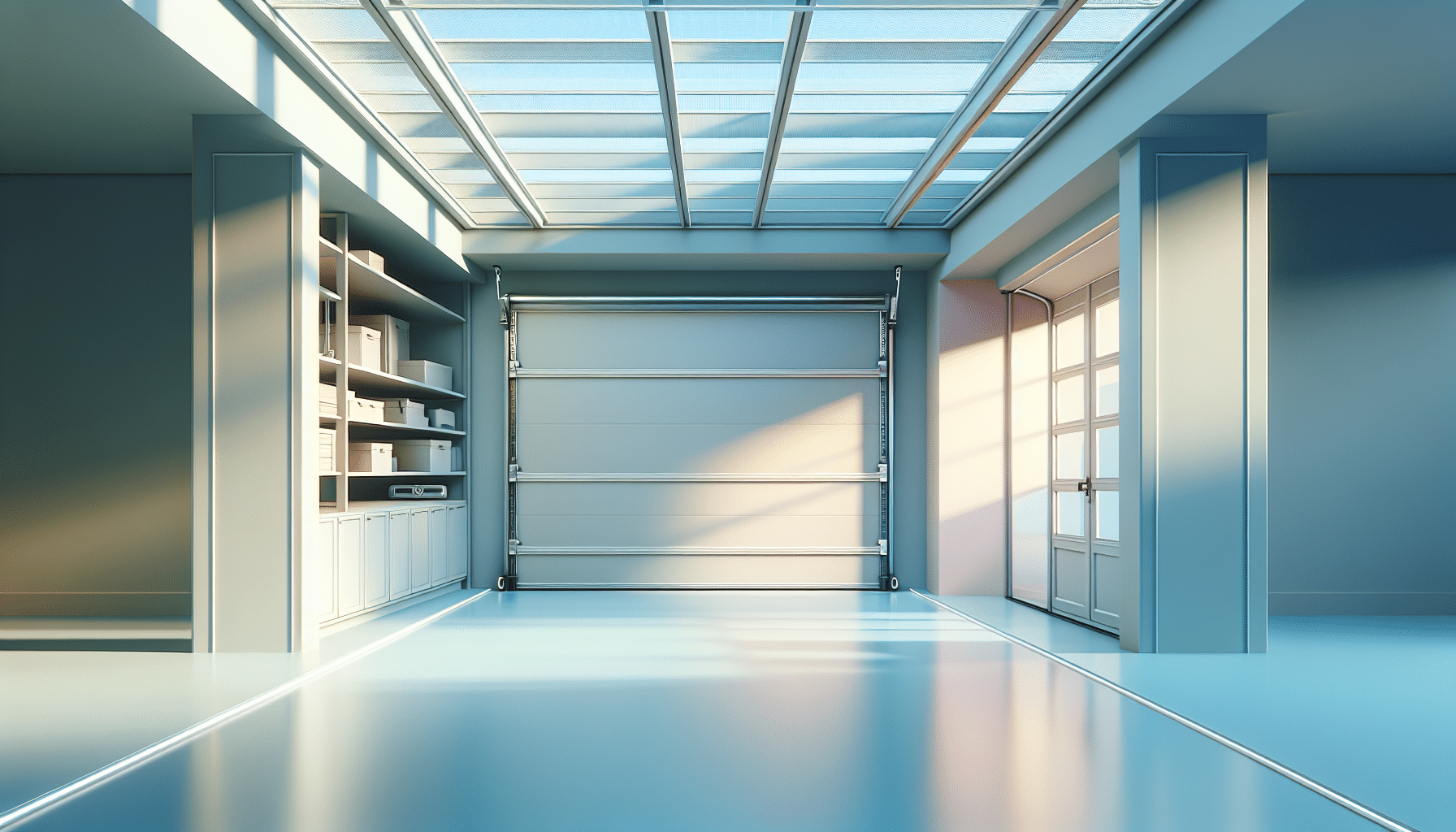
Color and clutter management may seem like an odd duo, but they play a crucial role in garage cooling. Lighter paint colors can reflect sunlight, contributing to a cooler garage space, while decluttering can enhance air circulation.
Let’s investigate these strategies more thoroughly.
Lighter Colors for Heat Reflection
When it comes to color choice, it’s best to stay light. Here are some recommendations:
- Lighter wall colors can reduce heat absorption
- Applying paint in white or cream shades to garage doors and exterior walls can help keep the interior cool by reflecting heat
- Water-based latex paint with mildewcides is recommended for its reflective properties and resistance to temperature fluctuations.
So, if you’re planning a garage makeover, keep it light!
Decluttering for Improved Air Flow
A clutter-free garage is not only pleasing to the eye but also cooler. Clutter can obstruct airflow paths and lead to higher internal temperatures. Plus, piles of items can trap air, creating hot spots and reducing the overall efficiency of air movement.
By implementing organization strategies like installing cabinets and storage racks, you can promote a clutter-free and cooler garage environment.
Portable air coolers
Portable air coolers like Evapolar are a great option for beating the summer heat. These handy devices are perfect for use at home or in the garage. They’re easy to move around, which means you can take the cool breeze with you wherever you go in your garage. Now that’s what we call cool convenience!
Advanced Cooling Solutions: Air Conditioning and Mini-Splits

For those seeking a more advanced cooling solution, air conditioning and mini-split systems could be your answer. They offer efficient and effective cooling, with several options to choose from, including ductless mini-splits, window air conditioners, and through-the-wall air conditioners.
Let’s further dissect these sophisticated cooling options.
Selecting the Appropriate Air Conditioner
Choosing the right air conditioner for your garage can make a world of difference. Ductless mini-split air conditioner units are a top choice for average-sized garages. However, through-the-wall air conditioners are also a great option, known for being quiet, highly efficient, and capable of cooling spaces rapidly. The key is to assess your needs and choose the best fit.
Benefits of Mini-Split Systems
Mini-split systems are not just effective; they’re also energy-efficient. They don’t require windows for installation, offering greater flexibility for garages lacking window space. Plus, they ensure a more cost-effective operation by minimizing energy loss.
If you’re looking for an efficient way to keep your garage cool, mini-split systems are worth considering.
Seasonal Adjustments for Maintaining a Cool Garage
Seasons change, and so should your garage cooling strategies. In the hotter months, you can:
- Close the garage door during peak heat hours
- Open the garage door during cooler mornings
- Consider parking a recently driven hot car outside rather than inside the garage to prevent additional heat buildup.
Remember, the goal is to keep your garage cool, and these seasonal adjustments can make a world of difference, even if it’s just a few degrees. The cool night air can also contribute to maintaining a comfortable temperature in your garage.
Creative Alternatives for a Cool Garage Experience
If you’re the type who likes to think outside the box, you might enjoy trying out some creative alternatives for garage cooling. Ever heard of a swamp cooler? It propels cool air by blowing a fan across ice – a practical method for temporary cooling needs. These DIY hacks offer an unconventional yet effective approach to reduce garage temperature.
So, let your creativity shine and explore these innovative cooling solutions, without having to blow hot air.
Summary
So, there you have it – a comprehensive guide to keeping your garage cool. From maximizing air circulation and insulating your garage, to implementing smart shading strategies and exploring creative alternatives, there are numerous ways to maintain a comfortable garage temperature. Remember, a cool garage is more than just a comfortable space; it’s also a way to protect your belongings and increase your home’s overall energy efficiency. So, make these changes today and enjoy a cooler, more comfortable garage tomorrow.
Frequently Asked Questions
What is the best way to cool a garage?
The best way to cool a garage depends on factors like size, layout, and insulation. Consider maximizing air circulation, proper insulation, shading strategies, and advanced cooling solutions for an effective cooling method.
How can I improve the airflow in my garage?
You can improve the airflow in your garage by optimizing fan placement, enhancing natural ventilation, and removing clutter to allow for better air circulation. Consider also installing active ventilation systems for added airflow.
How does insulation help in maintaining a cool garage?
Insulating your garage helps maintain a stable temperature by reducing heat transfer from the outside through the roof, walls, and doors. So, make sure to insulate these areas for the best results!
What are some creative alternatives to cool my garage?
You can try making a DIY swamp cooler with a fan and ice, or consider using a portable air cooler to cool your garage. Both of these options can be effective in providing relief from the heat in your space.
Is it worth installing an air conditioner in the garage?
Yes, installing an air conditioner in your garage can be effective for cooling the space, but be sure to select the right type for your specific needs.

